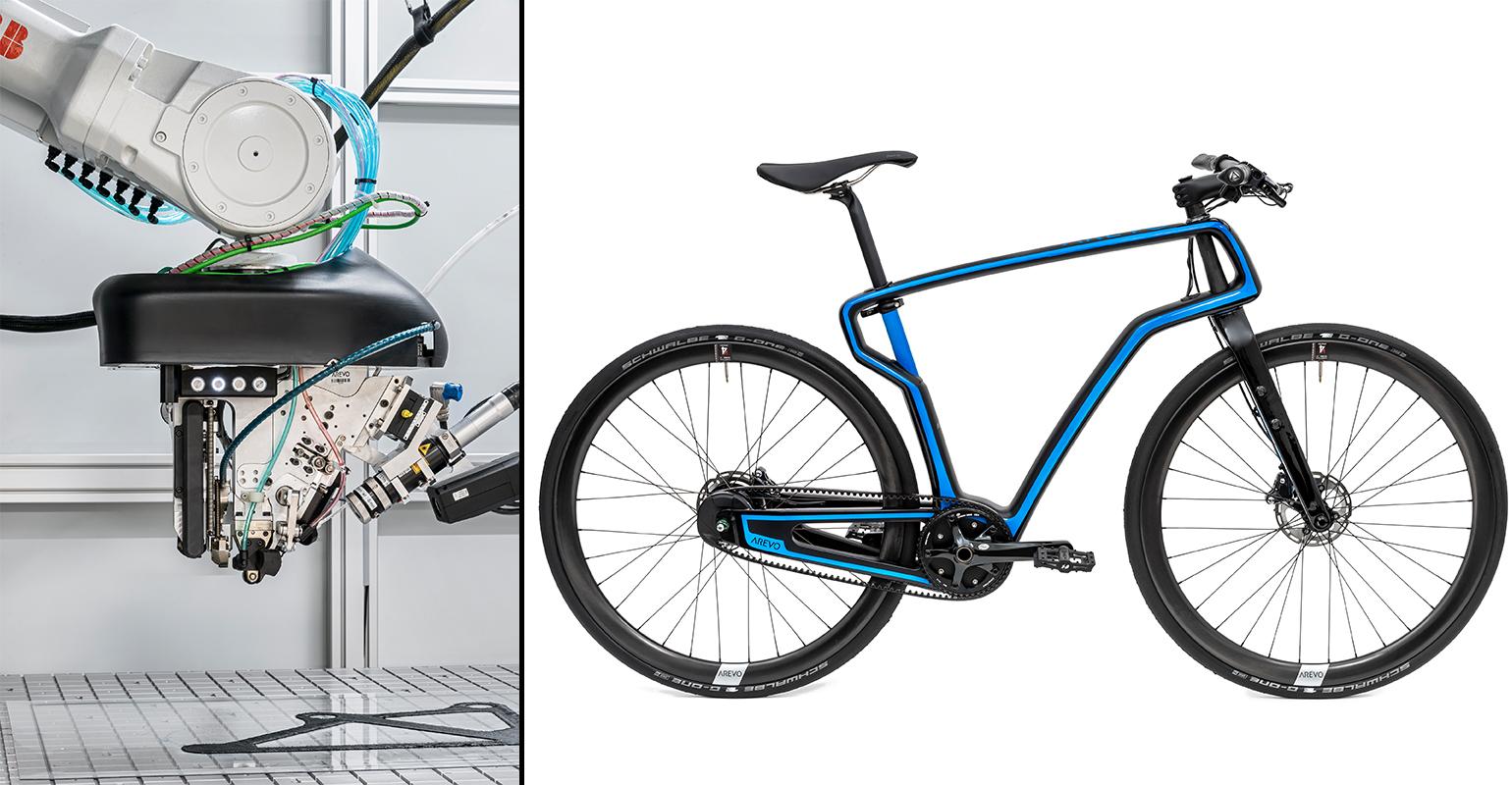From Bikes to eVTOL: How A Startup Is Simplifying 3D Printing for Aircraft Parts

An additive manufacturing startup that began with 3D-printed eBikes is now looking to disrupt the aviation industry through the ability to print complex parts of any size and shape. Bay Area-based Arevo is hoping to move into additive manufacturing of aircraft and eVTOL parts following recent backing from Airbus Ventures.
Founded in 2014, Arevo’s additive manufacturing system entails a combination of unique software, thermoplastic materials and a deposition head mounted on an industrial robot arm to provide scalability for 3D printing parts. According to Wiener Mondesir, Arevo’s chief technology officer, the combination of these elements seeks to address the main inhibitors within additive manufacturing to penetrating high-scale markets.
The software, which Mondesir calls “the centerpiece of Arevo technology,” was developed to make it easier for designers to develop with composites. “We think that targeting non-experts will really grow composites. We want to put the software in the hands of designers so they can build with composites,” he says. “With Arevo software we’re able to just take a geometry and a bunch of loads that a part may see in its actual functional life and come up with the orientation on how to build that part.” Once the software simulates how the part will perform, Mondesir says it optimizes for weight and stiffness across any kind of complex geometry.
When it comes to printing parts, Arevo combines its unique towpreg material—which does not require any kind of curing after printing—with its direct energy deposition method of mounting a deposition head to industrial robot arms. “One of the unique attributes of our technology is we like to say we borrow from nature. When you look at a spider building a web, it’s a 3D structure in space and it can build a part bigger than itself. We’re not confined to a small envelope—we can build structures bigger than the robot itself,” he explains.
To demonstrate the technology’s ability to combine printing of what was previously multiple parts into one structure, Arevo began printing what it calls the “world’s first 3D-printed carbon fiber unibody bike frames.” According to Mondesir, a bike’s structure is both similar and—in some ways—more complex than printing aerospace parts due to its extreme curvature and need to be lightweight, load-bearing and safe. He adds that the Arevo system was well-received in the bicycle industry due to its ability to enable customization and on-demand manufacturing of bikes locally.
Arevo is now actively focusing on aircraft parts—particularly for eVTOL. “They’re targeting a scale in terms of volume that’s more automotive-like, so obviously they’ll be using composites for light weight and managing payload expectations,” says Mondesir. “We believe that our technology at scale for composites is a perfect match for eVTOL.”
The company has already started printing aerospace parts for testing, such as cascade thrust reversers, stringers and seat frames. “We would argue that our parts are ready for structural [applications], but the aerospace industry has its own regulatory timeline, so today we’re targeting internal structures because from a regulatory qualification standpoint, it’s sooner to market,” says Mondesir.
Arevo has been working with Airbus on exploring 3D printing of aircraft parts for several years and the OEM’s Airbus Ventures arm invested in Arevo’s Series B round funding in late 2018 for an undisclosed amount. According to Airbus Ventures, it believes its support will help Arevo “master the next generations of printers,” identify key applications in aerospace and tackle the qualification path for 3D printed aircraft parts.
In addition to seeking out aerospace and eVTOL partners, Mondesir says Arevo is also working on building out manufacturing partners to license its technology for manufacturing as a service (MaaS). The company recently signed two MaaS deals with Japanese glass manufacturer AGC Inc. to supply its Aqua Printer system for on-demand 3D printed composite parts.
